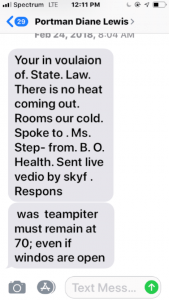Do you own land on one of the seven hills of Cincinnati? Has your downhill neighbor started digging on their land? Has such digging threatened to cause or caused your land to slide? If you answered yes to the preceding questions, then you might be entitled to an injunction or damages due to your neighbor removing the “lateral support” to your land.
This blog post will address a (i) background on lateral support; (ii) neighbor’s liability for removing lateral support from a landowner’s land when such land is in its natural or improved state; and (iii) landowner’s recourse when their land is going to start or starts to slide due to their neighbor’s digging.
Background:
The right to lateral support is a landowner’s right to have their land supported laterally by their neighbor’s land. The right varies based on whether the damaged land is natural or improved. Land in its natural state is always entitled to lateral support. However, improved land is not so entitled unless provided by statute or a neighbor negligently removes lateral support. Ohio provides such a statute.
Natural Land:
If a neighbor’s digging causes damage (e.g., sliding) to a landowner’s natural land, then the neighbor is liable for the damages that flow from such digging. There is no need for the landowner to show fault; it is a strict liability standard. To prove strict liability, the landowner must show (i) that their land was injured by the removal of its lateral support, (ii) that the injury resulted from the neighbor’s digging, and (iii) ascertainable damages.
Improved Land:
The Ohio Revised Code, under Sections 723.49 – 723.50, allows a neighbor to excavate down to (i) nine feet below the curb or street grade and (ii) the full depth of the foundation wall of any building on the landowner’s land, without liability. That said, if a neighbor digs to a depth greater than nine feet below the curb of the street, and such digging causes damage to any of a landowner’s buildings, then the neighbor is liable regardless of whether the neighbor is negligent. However, the neighbor’s digging must be the proximate cause of the damage.
Under a negligence standard, a neighbor might also be liable when the neighbor’s digging causes damage to a landowner’s building. The landowner must demonstrate that the neighbor was negligent by showing that the neighbor’s digging (i) removed the lateral support to the landowner’s building, (ii) caused injury thereto, and (iii) caused ascertainable damages.
Note: Concerning negligence, a neighbor has a duty to perform work, even if on their land, in such a manner as not to damage an uphill landowner’s land.
Landowner’s Recourse:
When dealing with the possible removal or the removal of lateral support, a landowner may seek an injunction or sue for damages. A landowner may seek an injunction to ask the court to prevent a neighbor from taking actions that will remove the lateral support to the landowner’s land. Alternatively, a landowner may seek monetary damages after a neighbor damages the landowner’s land. Such damages are based on “the time required to repair and a comparison of the cost to repair to the diminution in the fair market value of the [landowner’s land] before and after the damage.”[1]
Note: If a landowner lives uphill from a neighbor, and the neighbor removes soil downhill from the landowner’s land resulting in damage to the landowner’s land, then the neighbor must make the repairs.
Conclusion:
If (i) you own land on one of the seven hills of Cincinnati; (ii) your downhill neighbor started digging on their land; and (iii) such digging threatened to cause or caused your land to slide, then call the Finney Law Firm today, where an experienced professional can provide insight as to whether you have a claim for an injunction or damages.
[1] 1 Ohio Real Property Law and Practice § 8.07 (2021).











